Garden Report: May 7
Sometimes when I make a garden report post, I get e-mail saying I'm a bit uptight about Latin names. And that is true; I like to give the real name of a plant so anybody who wants one knows what it is and can find it. Common names don't work well for that. Anyway, this time I actually delayed writing this post because one of the tags had submerged under the plant and I wanted time to dig it out in the daylight. This is how I suffer for you.
The real big news in the garden this week (and the one of which I have no photos) is that Rosie has decided fava beans are delicious, and she'll go harvest the pods off the plants and snack on them. This means even more anti-dog defenses are required. Stupid dog.
We had more than an inch of rain last weekend, which was great news for the garden. Many of the weeds are now waist-high back there, and of course the only time I had free was when it was raining/ Here's one plant I can see using all over the place (though it doesn't work so well right by the path as it's much taller than expected): Echium plantagineum. It's about 18" tall and maybe 12" across. I have another one that mysteriously came up white, which half makes me wonder if they somehow got mislabeled.
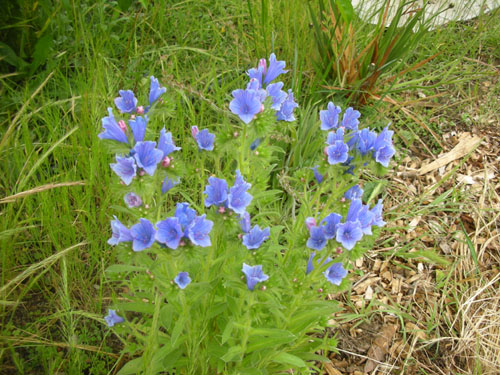
On the other hand, the theme of TOTALLY OVERGROWN is going strong up there in the orchard, as the salvia bed decided to blow this summer. I don't know how obvious it is from this picture, but we have there a couple of savlias (especially a Salvia candelabrum) that have run into each other hard and are sending up stalks more than five feet high. It's a little nutty.
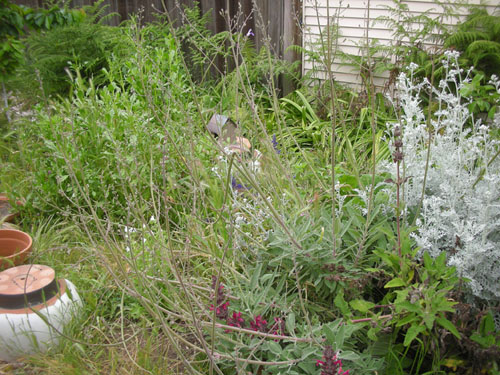
The only thing that saved this scene from being as overgrown was the judicious application of the lawnmower. Note that the Salvia apiana has stalks that are taller than the dwarf Montmorency cherry. The Buddleias are also getting nice and tall, covering up the fence.
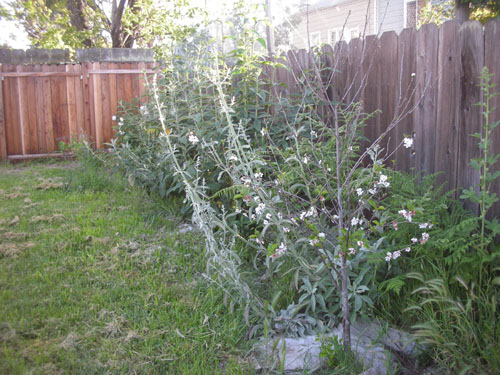
You can see the Montmorency cherry is in bloom now (the sweet cherry trees have fruit already). Also in bloom are the standard apples. Look:
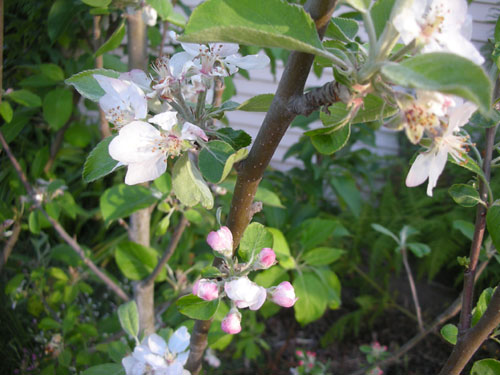
Yay, apples.
And oh, yeah: yay nectarines. The whole tree might look this great if I could just remember to spray for peach leaf curl in the winter.
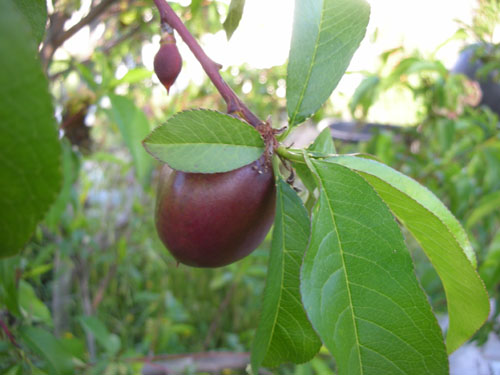
This year I'm trying to save up enough strawberries to make a batch of jam. That's about 2 1/4 pounds of hulled berries, so I come through and pick the ripe and intact ones (snails get quite a few), wash and hull them, and stuff them in the freezer. We're up to just over a pound now (with some supplementation from our weekly veggie box).
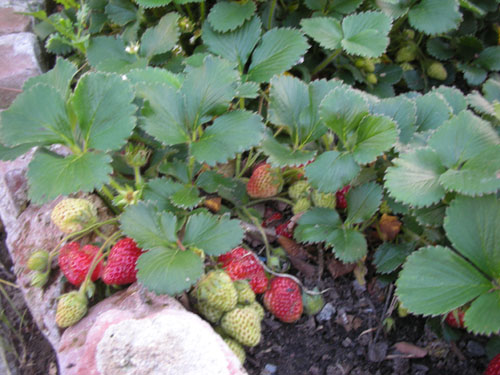
Over the fall and winter I worked on getting more flowers planted around the garden that are good for bees. As I discovered at the class on native bees I enjoyed a while ago, bees like daisy-like flowers that are blue and white.
This particular plant, Senecio stellata, is not the most popular (Wahlenbergia still wins that prize), but it works for me.
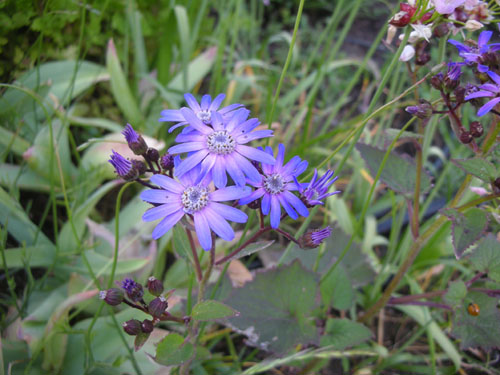
The real problem, of course, is that most of those flowers are not yet in bloom. Our native bees emerge for periods of a couple of weeks at a time, at very specific times of year. So this very pretty Leucanthemum x superbum 'Tinkerbelle', with lots of very promising buds, has already missed out on at least one species (probably more; my ability to monitor bees in the garden is pretty limited).
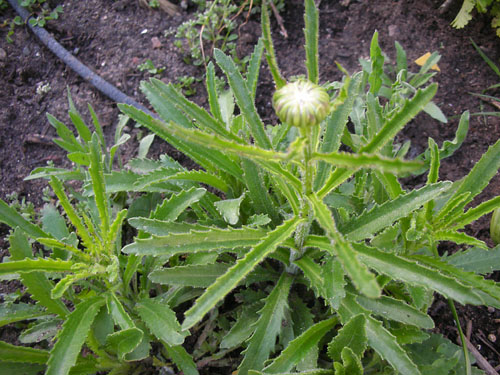
I was amused to see that the Feverfew had self-sowed and one seed came up in the middle of this Erigeron 'Pink Jewel'. Erigeron was one of the plants specifically recommended for native bees.
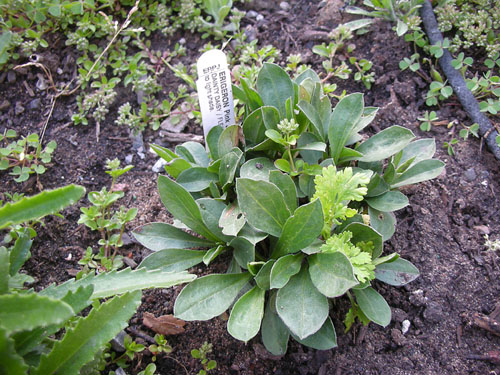
The Feverfew came back even more bushy and insane than last year. (That's Chrysanthemum parthenium 'Virgo', grown from seeds I got from Select Seeds.) I've taken several seedlings and put them in other places this year, but I think I might not need to sow the rest of the seeds I have.
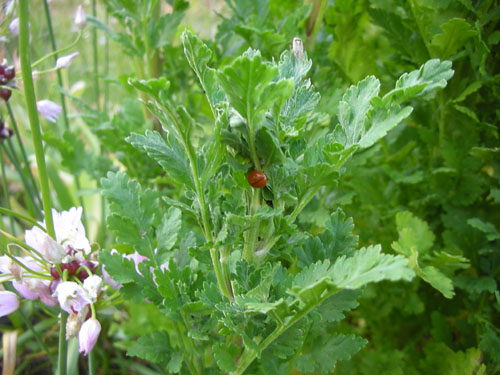
So maybe no flowers for the bees, but the ladybugs are pretty happy.
I'm liking this little guy. Partially subsumed under the poppy explosion happening around the dwarf apples, we have Tanacetum niveum. Little daisy-like flowers, pretty airy foliage. I really should move it so it doesn't have to deal with those poppies.
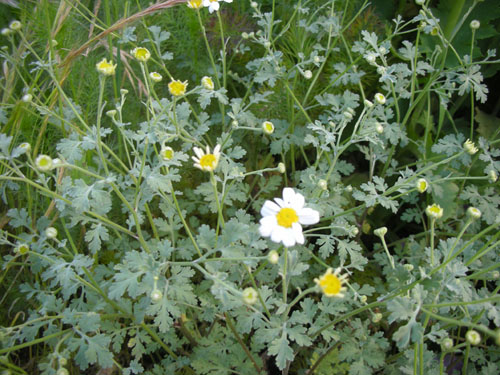
Speaking of insanity and poppies, I sowed some over by the chickens, and they seem to be coming up. Anything remotely green that comes within beak-range of that fence is history, though.
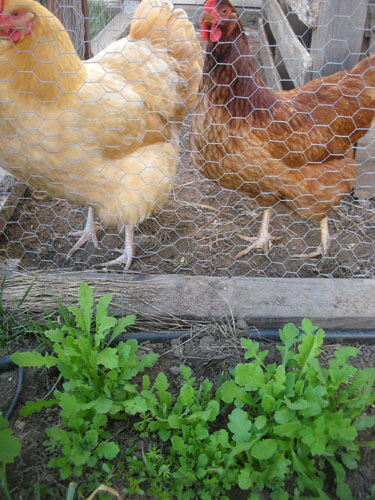
As the poppy onslaught dies down, the nigellas are preparing for their turn.
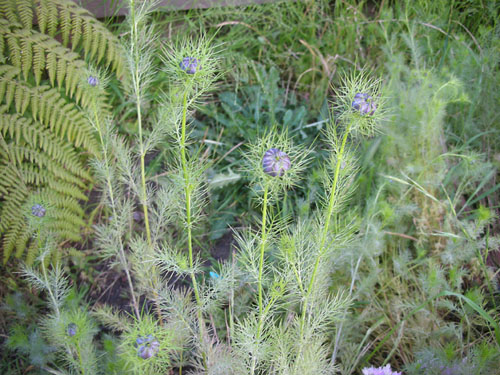
Nigella hispanica is one of my faves. I've not gotten it to self-sow like the everyday nigella, but maybe this year will be the charm.
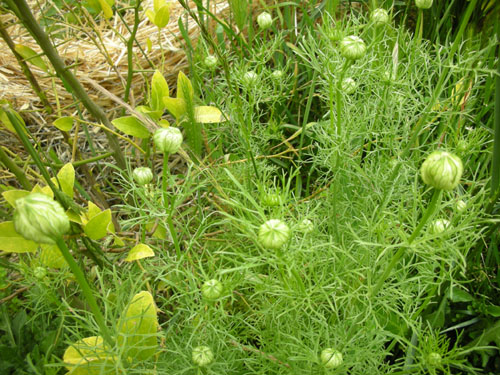
If you're a plant fanatic and in the Bay Area this weekend, consider making a visit to Annie's Annuals for the big Mother's Day sale. Mothers or those willing to impersonate mothers get a free plant with purchase.
Technorati Tags: apples, bees, cherries, chickens, dogs, flowers, fruit, gardening, jam, nectarines, plants, poppies, salvias, strawberries, trees, weeds
posted by ayse on 05/08/09